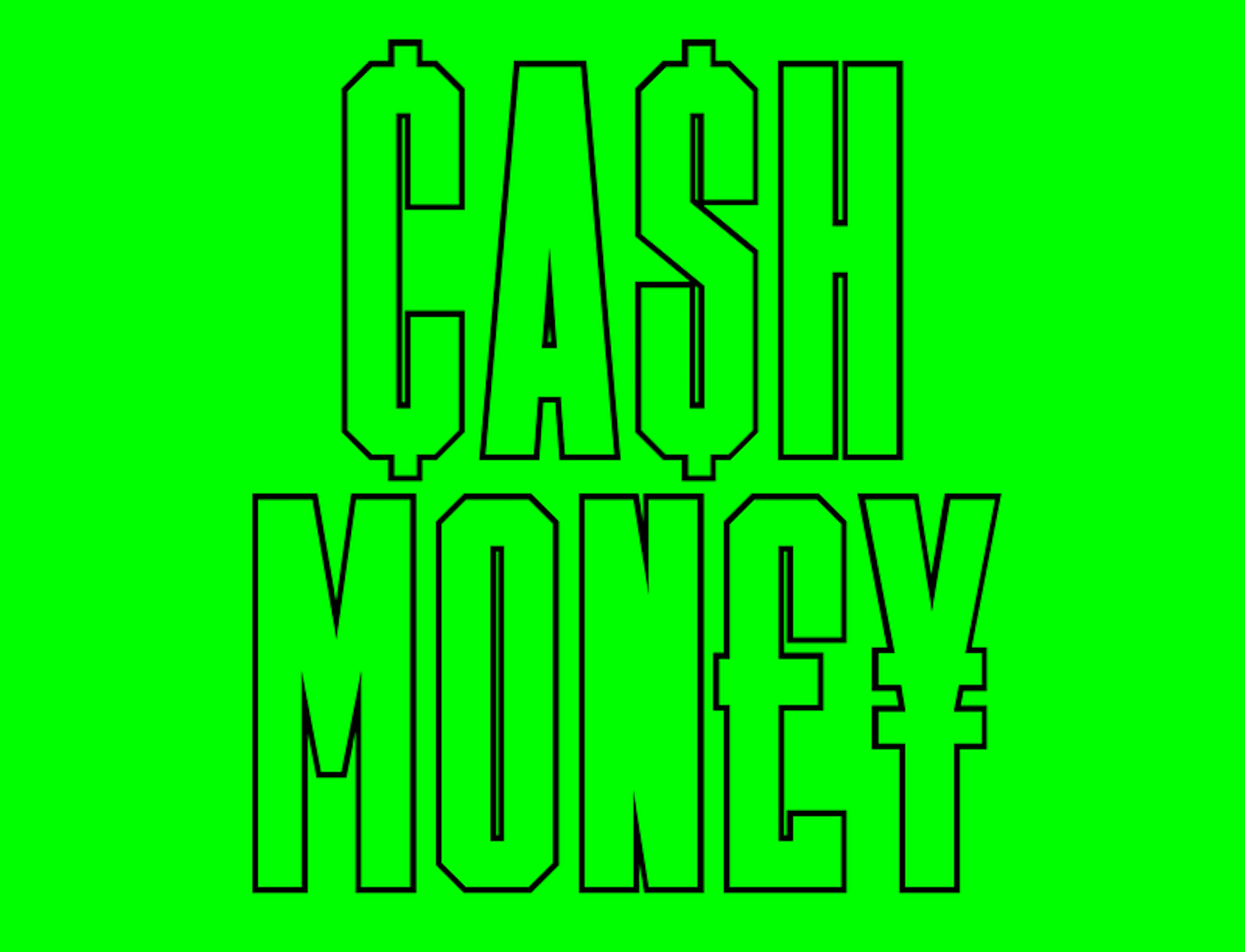Sign painter Chris Mackenzie-Gray is leaving his mark across England
Following the slogan of an old sign painter, Chris Mackenzie-Gray set out a goal for himself: find something you’d do for free, then find someone to pay you for it. With a degree in graphic design under his belt, Chris set out to running his own business, Toucan Signs, as a sign painter. With an ability to work both digitally and by hand, Chris is now sought-after by the likes of the Museum of London and Honest Burgers. Here, he tells us how he learned the ropes, talks us through some technique and fills us in on the sign painting community in London.
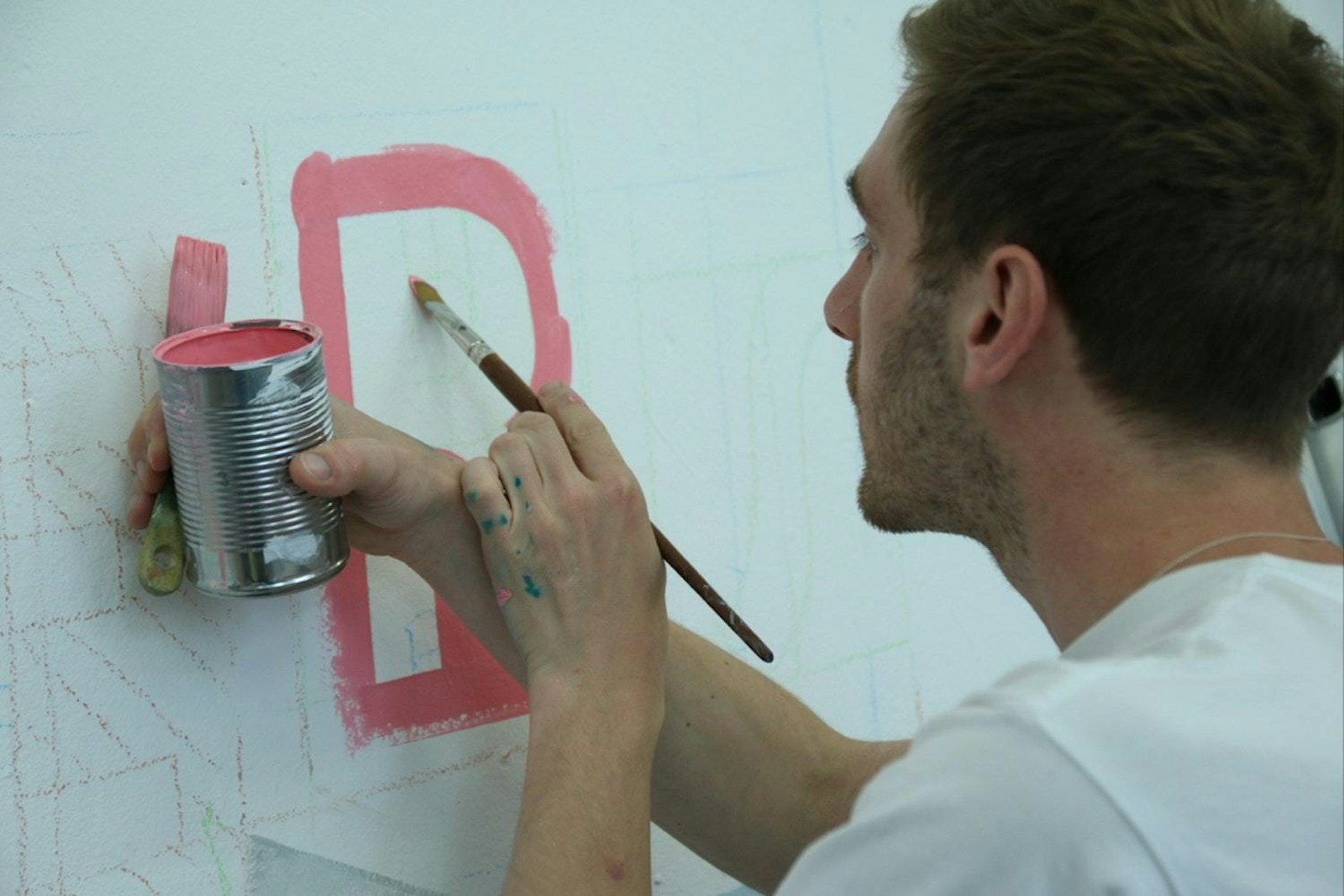
Chris Toucan
Job Title
Sign Painter
Based
London
Previous Employment
Freelance Graphic Designer 2013, Assistant to Matthew McGuinness on various community mural and sign painting jobs, 2014
Education
Foundation, Camberwell (2006–2007)
BA Typographics, London College of Communication (2007–2011)
Clients
Museum of London, Honest Burgers, Brindisa, Innis & Gunn, Fullers, JKS Restaurants, various other coffee shops, restaurants and independent businesses
Website
Social Media
Day-to-Day
How would you describe what you do?
Toucan Signs offer sign-painting services ranging from very small door numbers to large-scale murals, and everything else in between. We work on all kinds of surfaces including brick walls, gloss, shop faces and glass and for a wide range of clients – from very commercial to very independent.
I think a lot of businesses are starting to see how, in a row of shops with neon or plastic signs, a nice piece of handprinted signage can set you apart. There’s that tangibility to it. It’s human.
Originally, I set up Toucan Signs with my friend, Sean, who I used to live with. I remember working on a mural, listening to a classic Bobbie Brown track on the radio and thinking, ‘Toucan,’ like, ‘two-can…that would be a really good name for a company if there were two of you.’ At the time, Sean had his own thing going on, but I nervously asked if he wanted to work with me. We worked together for about a year, before Sean decided he wanted to work as a freelance graphic designer.
“Some people can be a bit snobby about sign painting; there’s this real pride in saying, ‘I do it all by hand.’”
Where do you do most of your work? What does a typical working day look like?
I share a studio in Hither Green with Done London, a T-shirt screen printing company. It’s where my tools and paints are, so I do all my art working and preparations for jobs there.
Start times and locations vary, but I aim for an eight or nine-hour workday but often do 12 hours. I’d rather try and get a job done in a day than come back and do three hours the next day. One day you might be doing small detailed work and the next, you’re working on a large mural. You’re always in different places; sometimes outside, sometimes inside. Over the four years I’ve been painting, I’ve seen more of the country through sign painting than through my own travels.
I try to have a four-day working week, split between the studio and onsite. I keep Fridays for admin, invoicing and chasing up clients. When I started out, my routine was all over the place, as I was always looking for work. But having no time to relax wasn’t very good for my wellbeing. It’s taken me a while to feel comfortable with my work-life balance. A lot of creative people I know suffer from various forms of depression; I think having a routine is a very good way to deal with that. I’ve found that having a diary is useful – I can’t do phones, I’ve barely managed to keep on top of Instagram.
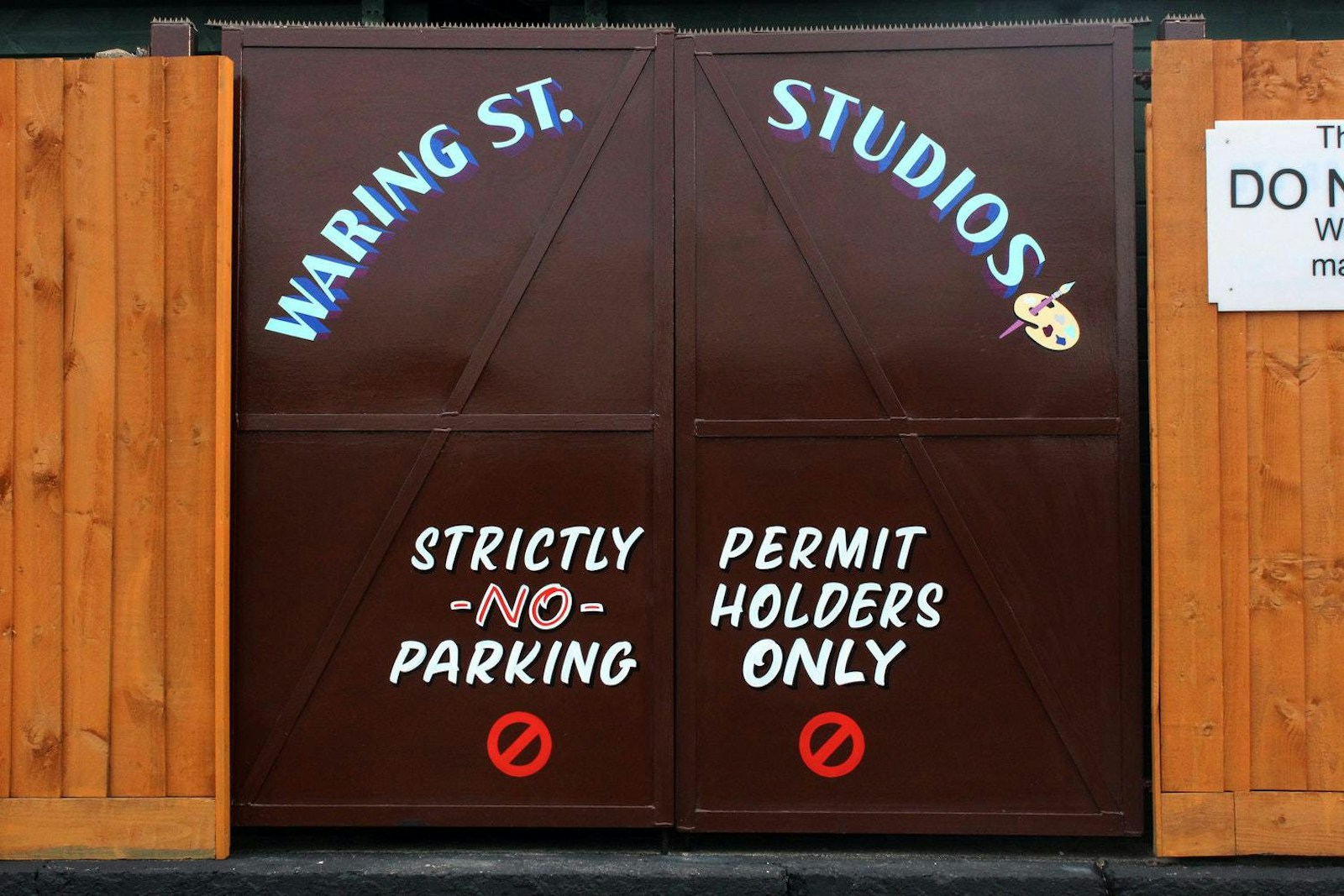
What do you like about working in London?
I’m very lucky that my parents lived in London, which meant that after graduation I didn’t have to pay rent, and could spend time creating a portfolio of work. London can be a very difficult city, especially if you’ve started at the bottom of the ladder in a junior design position. You’re not getting paid a lot of money or doing the work you want, but you also don’t have time to do personal work. That can be quite deflating.
I remember coming out of uni at a time when a lot of people wanted you to do internships for free, and I thought ‘that’s bollocks.’ I just think that’s really unethical. That’s probably how I ended up getting into freelance stuff.
“We painted this massive fish for a pop-up restaurant and I was dripping paint everywhere; I had no idea how to use a brush or gloss paint.”
How does your freelance-based work usually come about?
At the beginning, Sean was keen to get a good website. Because we were graphic designers, we knew how that could set you apart from other people. Before Toucan Signs, one of my biggest clients, Honest Burgers, actually found me on Instagram. I’ve been working with them for almost three years now. Tom’s (Honest Burger founder) wife, who does all the graphic design, had seen my stuff and put me in touch with him. They had a new site opening in Old Street, and wanted a design painted on the wood panels out front, so I got free rein to design it. I used all at the wrong brushes, and it took me way longer than it should have, but they loved it. That led to more work, and every time they opened a restaurant, I’d do the hoarding for it.
There are quite a few jobs I got off the back it so I made flyers and taped them to the wall. One time a woman called me up to paint a massive one metre wide, one and a half metre high number on the side of a house.
Instagram makes work more accessible; you’re not just seeing a shop front and wondering who painted it – you can actually find them. But also, more often than not you’re outside, physically painting a sign so, a lot of work has come from people stoping me in the street, chatting and asking for a card. Your back is a perfect piece of advertising, so put something on your T-shirt.
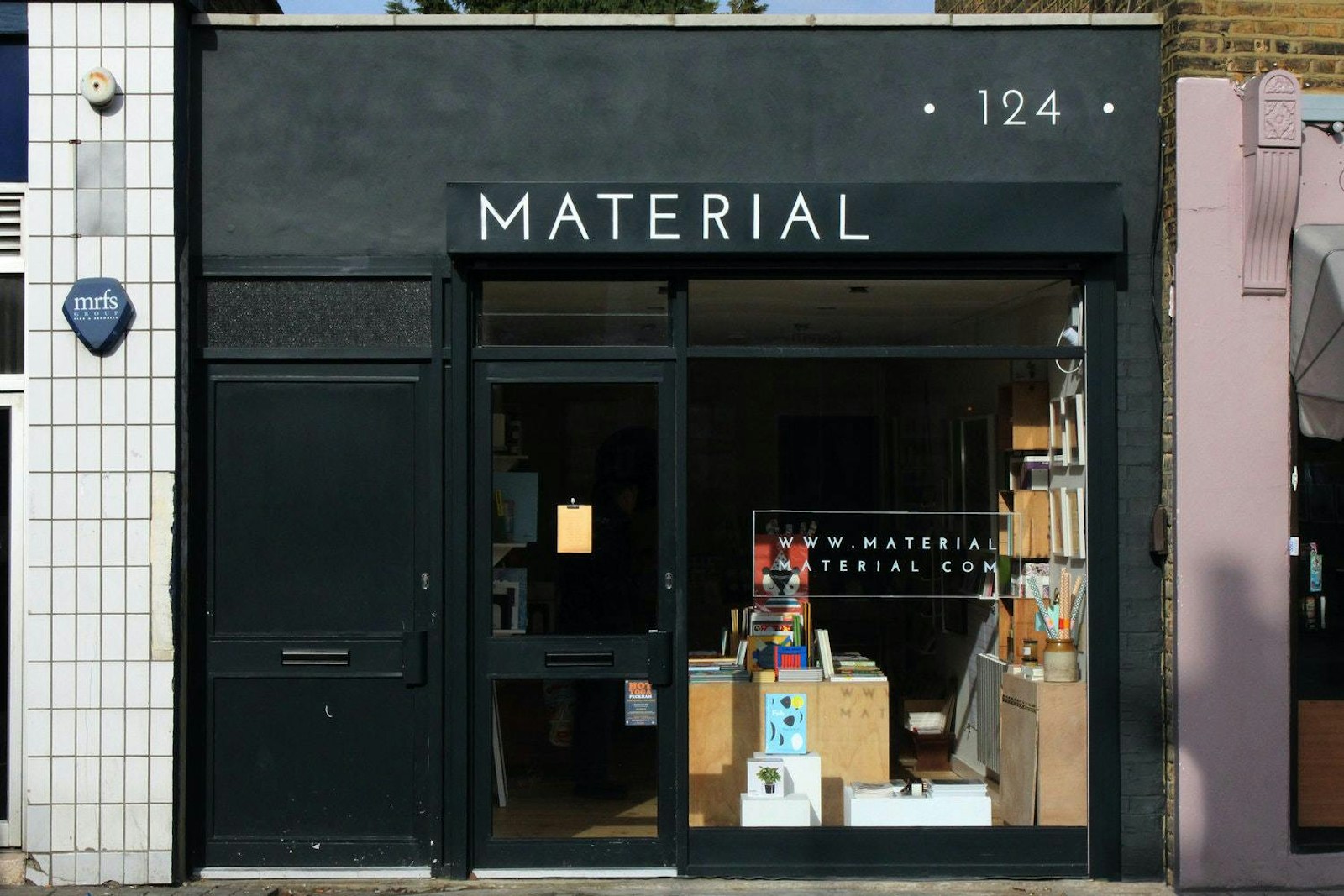
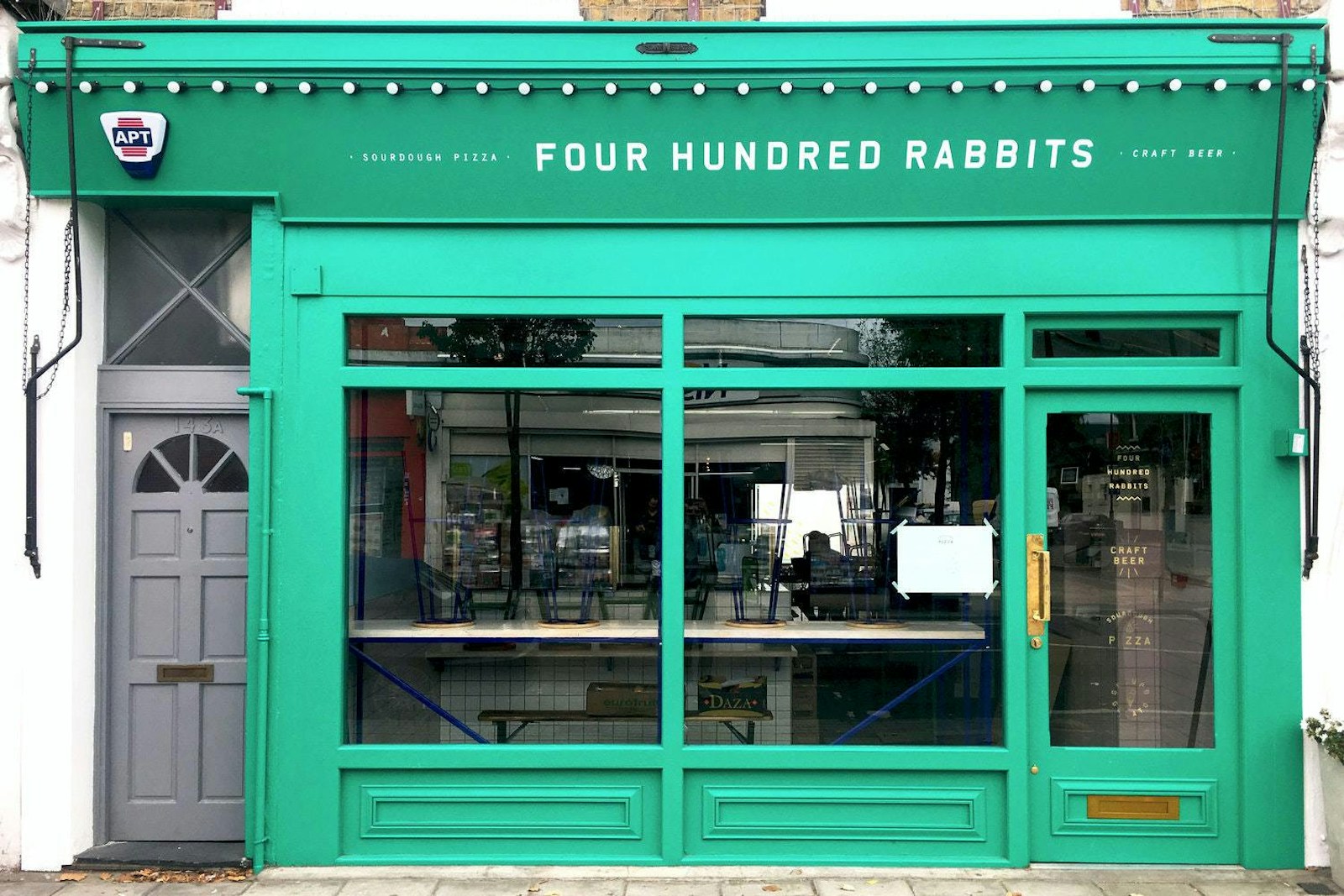

How collaborative is your role?
Obviously, you want to keep your clients for yourself, but if I need to get someone else in to help, I will. We’ve got a WhatsApp group called Alphabetics Anonymous, which is like a support group for sign painters. If you need an extra pair of hands, you can put it on the WhatsApp group and someone will help out. There’s a real community, and people are quite friendly – probably because there’s enough work, so they don’t mind passing it around.
What tools do you use most for your work?
Some people can be a bit snobby about sign painting; there’s this real pride in saying, ‘I do it all by hand.’ But if a client wants both hand-painted stuff and vinyl, why not be able to do both?
There’s a few different ways of doing it. You can draw a design, print it up on acetate, project it onto the wall, trace it onto wrapping paper, and then use the pounce, (or pounce-wheel), running it over the design perforates the paper, and then use a chalk pad. You put your design on the wall where you want it, bang the chalk pad through, take the paper off and you’ve got a dotted line. A lot of these methods are hundreds of years old; things haven’t changed much at all.
I don’t want to limit myself to just hand painted stuff, so obviously, if clients request vinyl, I’ve got to prep that on the computer. Sometimes we’ll use vinyl stencils and then finish it off with a hand-painted touch.
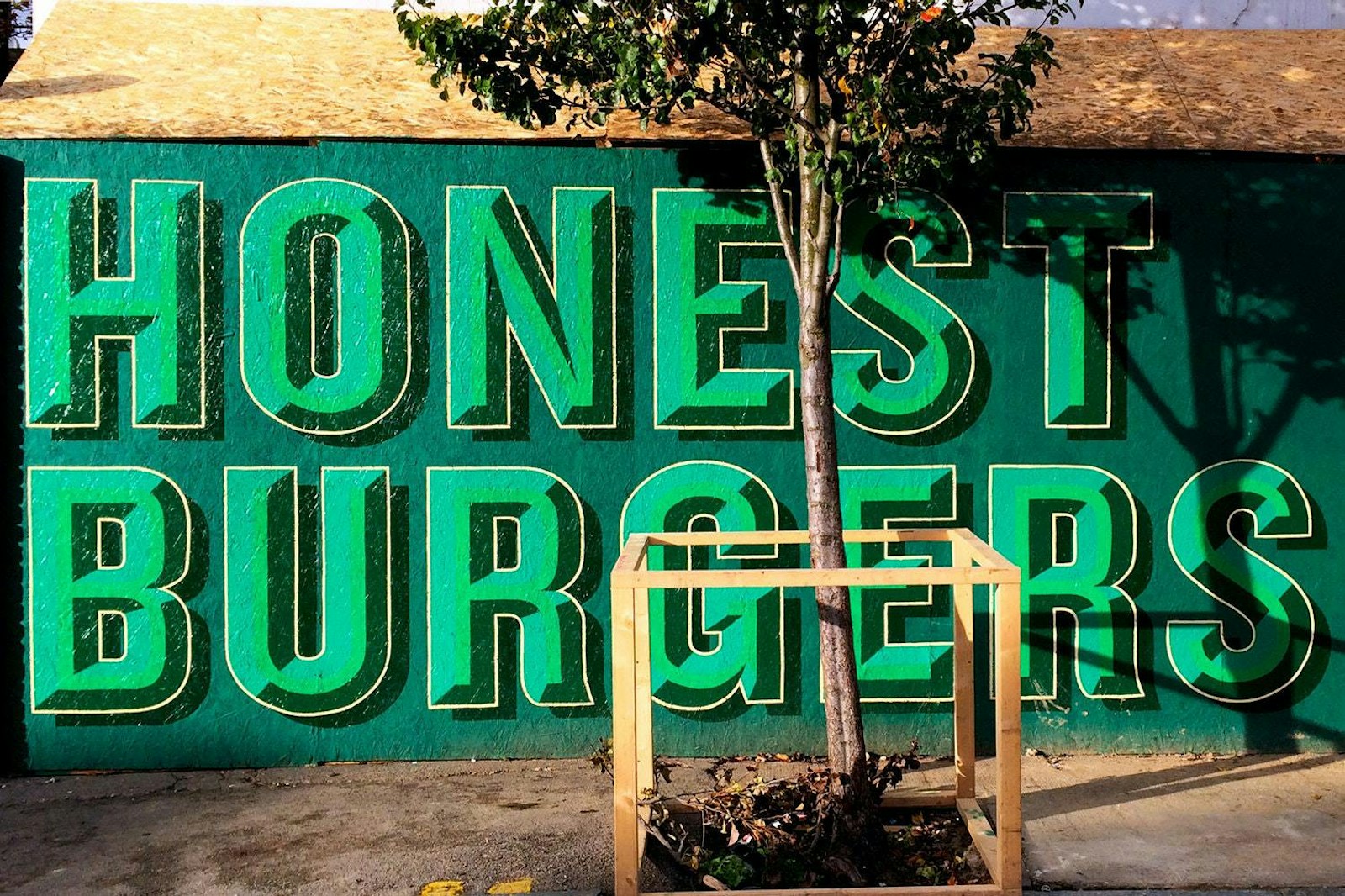

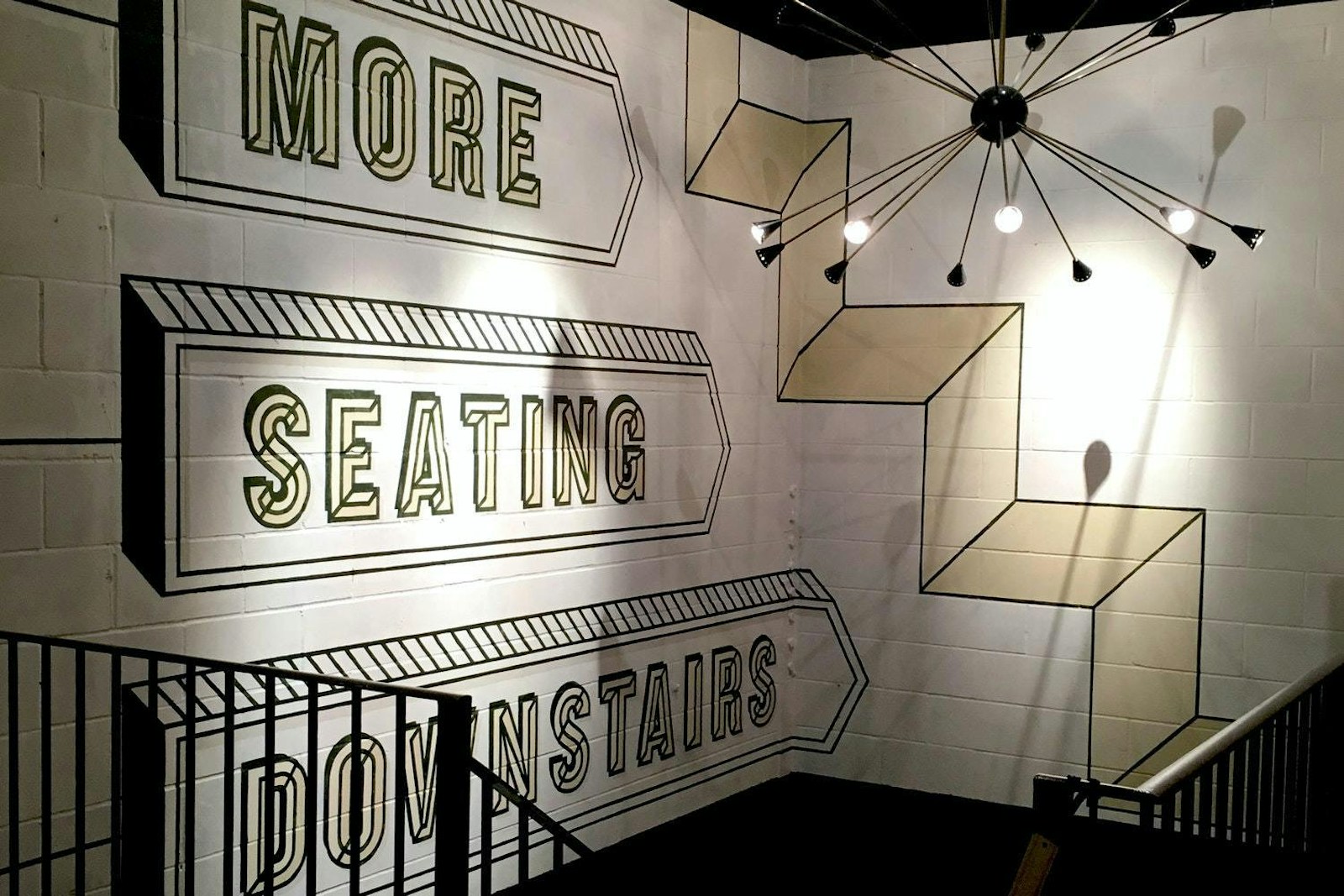
How I Got Here
How (if at all) is the subject you studied useful to your current role?
I studied graphic design with a focus on typography at LCC. They’ve got an amazing letterpress department in the basement, which taught me a lot about analogue processes. It was really quiet and I just fell in love with it. With a computer, it’s not difficult to change the layout or grid, whereas with letterpress, you have to really think about what you’re doing because it’s such a faff to change something.
Once we were asked to think of a few different avenues that we might want to do our final project on. I did a whole bunch of research into sign painting, and one of my tutors shut down the idea. Maybe they didn’t consider it graphic design, or a viable job but I just remember thinking, ‘well, that’s not something I’m going to think about again.’ I really enjoyed graphic design, but sitting at a computer nine hours a day would have left me feeling very drained.
“We’ve got a WhatsApp group called Alphabetics Anonymous, which is like a support group for sign painters.”
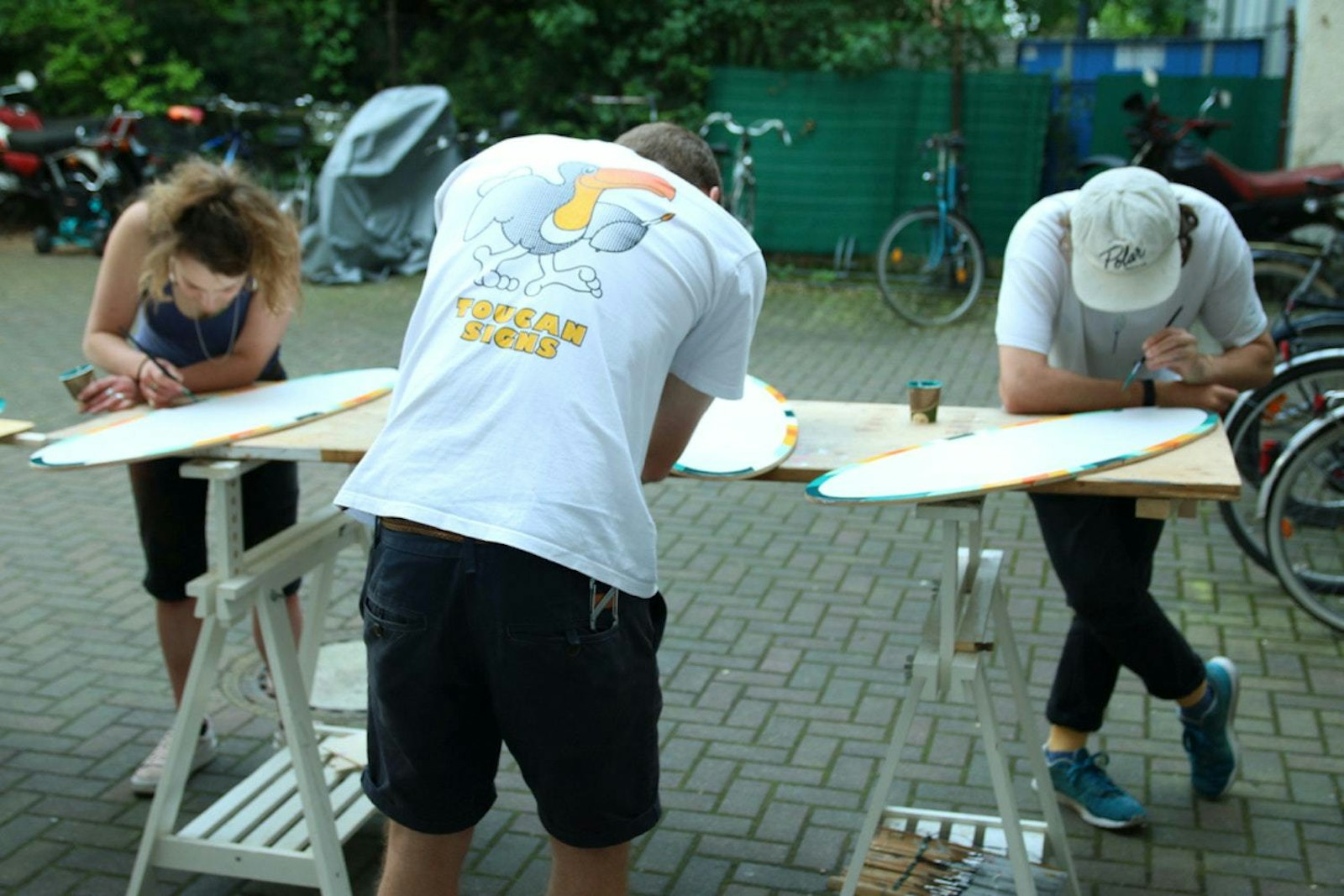
What were your first jobs?
After I graduated, I started a collective with a few friends. We used to go to abandoned factories, pull apart shelves and rip bits of metal off the door so we could paint on them. That was really where I started to get into doing typographic things by hand, using Posca pens and drawing up letters by hand.
I wanted to make a name for myself, so I started doing hand lettering jobs for various people designing logos; drawing it up, scanning it, turning it into a vector. Sean did a lot of pen and ink lettering, and he took me on my first sign painting job, where I used Oneshot (the paint sign painters use). We painted this massive fish for a pop-up restaurant and I was dripping paint everywhere; I had no idea how to use a brush or gloss paint.
Was there anything in particular that helped your development at the start of your career?
Sean put me in touch with an American sign painter Matt McGuinness who I then started working for. Matt taught me all the basics; how to use different brushes, how you mix paint on a palette, using thinner and so on. After a while, Matt got a job at a design agency, and he started passing on some of his other sign painting jobs to me.
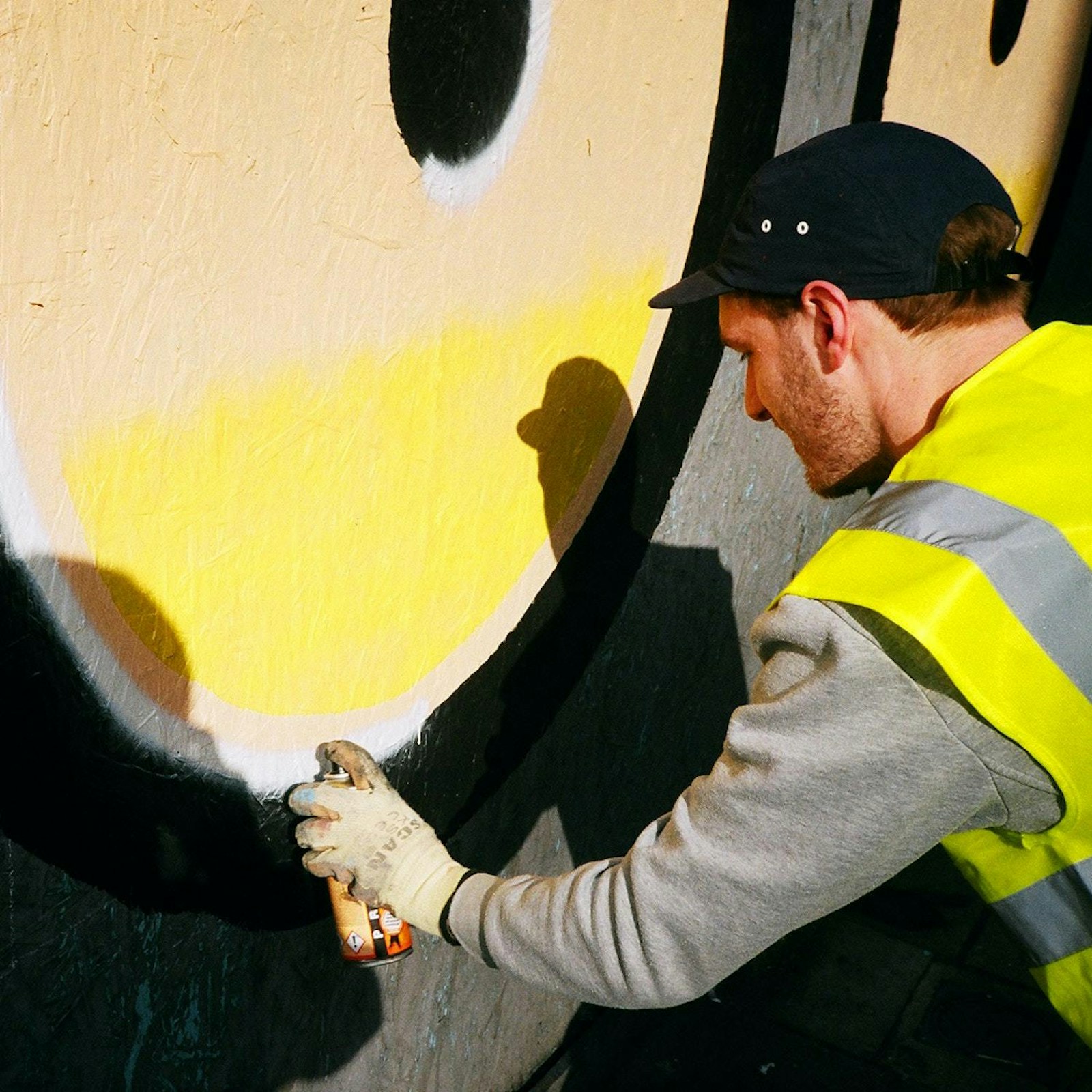
Words of Wisdom
How do you break down the cost of a job?
One of the things that I’ve started to do recently is create time-sheets. This means I can record how many hours I’ve done on each job. To work out an hourly rate, first sit down and figure out all your costs (if you’ve got a car, or a studio, and what you spend on materials per year) then figure out all the days that you can physically work. Take off all the weekends and bank holidays, then ten days in the middle of summer for a holiday, so that you’re left with around two hundred or so days. That’s a good way to figure out how much money you need to run the business and to live, and how many hours you’ll need to work.
Make sure you get your money’s worth. Find a middle ground between what you think is too much and what you think you can get away with, because, if you charge too little, you’re underselling yourself and your craft. Think about the fact that it’s not just the time you spent learning to sign paint, but you also went to university – all of those things factor into how good you are and what you can do.
Put yourself first, but respect the client. Don’t work ridiculous shifts, staying in the studio until three in the morning; if you can’t get the job done that day, come back tomorrow. If they’re trying to pressure you to do it in one day and it’s not doable, just be straight with them and that’s the way it should be.
“Make sure you get your money’s worth. If you charge too little, you’re underselling yourself and your craft.”
What advice would you give to a young creative wanting to become a sign writer?
Get out there, and reach out to as many people as possible. Everyone that I’ve come into contact with is incredibly friendly and welcoming. I’m more than happy to hear from people; it’s very flattering when people get in touch.
There’s also loads of workshops out there. Better Letters do a lot of great workshops. Nick Garrett does workshops; Ged Palmer also has a shop just off Brick Lane.
I’m so glad that I can do this job, that there are clients that will pay me to do it. There’s an old sign painter who when asked how he got into sign painting, said that you should find something that you’d do for free, and then find someone to pay you for it. If you want to do it, you can make it work. You’ve just got to find time for it. It can be difficult at the start, and the stuff you do might look rubbish, but practice makes perfect. Maybe send me an email, or slide into my DMs. That’d be great.
Interview by Marianne Hanoun
Mention Chris Mackenzie-Gray
Mention Honest Burgers


